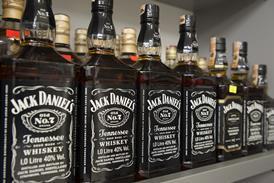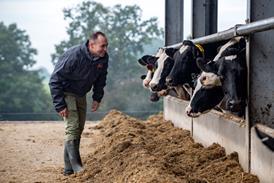The Grocer had long predicted it, but Wal-Mart's dramatic arrival on the UK scene, scuppering a bid from Kingfisher to seize Asda, astounded many industry leaders and commentators. The entire grocery sector braced itself for the Wal-Mart effect'.
Two years on, we present a major update of the Asda story. Has the impact of the multiple's new parentage been as dramatic as some industry watchers predicted? What significant changes have there been to British grocery?
Prices have undoubtedly fallen evident in The Grocer 33 weekly shopping basket survey where Asda notched up the highest number of cheapest baskets for the fourth year running, demonstrating EDLP in action. Price is pulling in the punters it now claims 7.9 million customers compared with six million four years ago.
Some analysts might snipe that although Asda is gaining ground on its competitors, it is still the same distance behind Tesco as it was two years ago.
But md Paul Mason's smile must get broader each time market share figures are released (see page 34). On the new format front, most industry commentators had only praise for the Patchway Asda/Wal-Mart supercentre in Bristol which heralded a new era for the chain with a much bigger emphasis on non food. The even newer small store format at Bodmin proves the multiple is moving with the times and is set to snap up sites in areas previously unsuited to its effective but unwieldy big store design. Many more mini-Asdas could be on the way.
The immediate embrace of Wal-Mart's principles was followed by the rapid adoption of its buying and supply chain processes, and it's getting harder to see the joins.
Chanting colleagues display a very un-British and almost religious fervour for their employer. Suppliers who were once anxious about their future with Asda have admitted their fears were unfounded.
Over the next six pages we look at what's driving the success and look to the future, starting at the top with an interview with Wal-Mart's European head.
{{FEAT. GENERAL }}
Close menu
- Home
- Retail & Wholesale
-
Products & Suppliers
- Back to parent navigation item
- Products & Suppliers
-
Product Categories:
- Back to parent navigation item
- Product Categories:
- Alcoholic drinks
- Bakery
- Cereals & breakfast
- Cheese
- Chicken & poultry
- Chocolate
- Confectionery
- Crisps, nuts & snacks
- Dairy
- Fish
- Fresh produce
- Frozen
- Household
- Meat
- Own Label
- Sauces & condiments
- Seasonal
- Soft drinks
- Vaping
- Vegan & plant-based
- World foods
- Suppliers
- People
- Reports & Data
-
Topics A-Z
- Back to parent navigation item
- Topics A-Z
-
Popular topics:
- Back to parent navigation item
- Popular topics:
- Cost of living crisis
- Crime
- Deposit Return Schemes
- Finance
- Government & Regulation
- Health
- Inflation
- Loyalty
- Marketing
- Mergers & Acquisitions
- New Product Development
- Sourcing
- Supply chain
- Sustainability & environment
- Technology
- Ultra Processed Foods
- Vaping
- A-Z all topics
- Content by type:
- Events
- Subscribe now
Sign in to comment on this article
Not logged in before? Register for FREE guest access today.
You will be able to:
- Read more stories
- Receive daily newsletters
- Comment on stories
Advert



















No comments yet